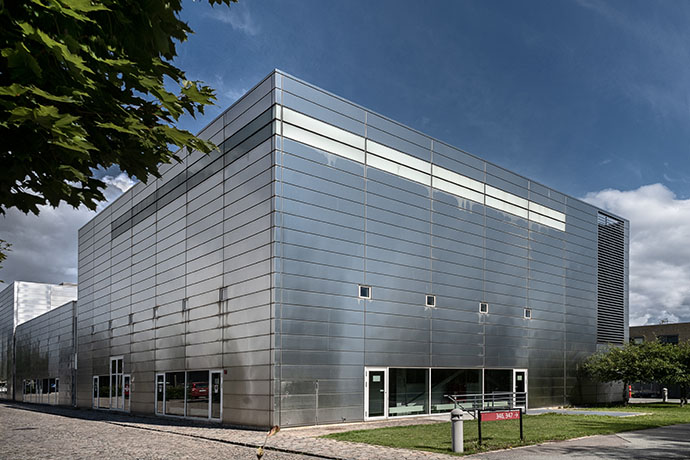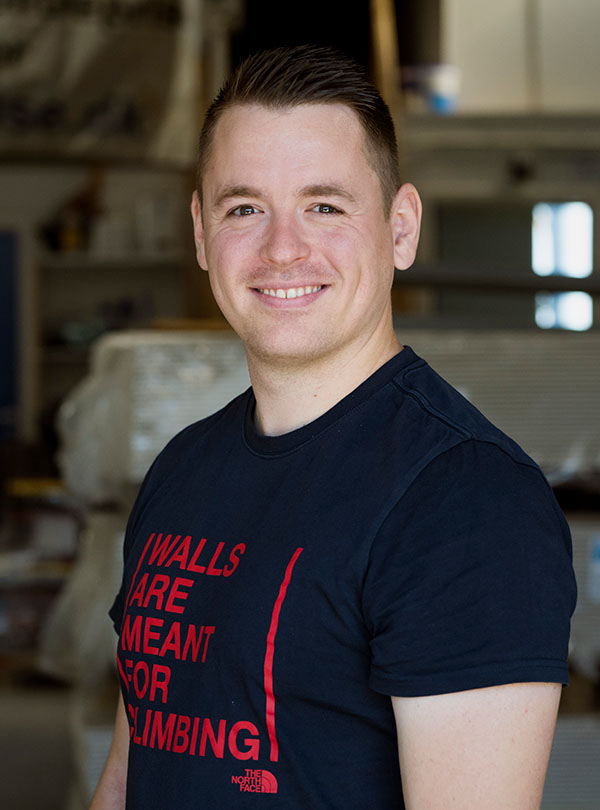Donning a hazmat suit to change a fan filter
Even when you’re just changing a fan filter in a nanolab, you need to take special precautions when it comes to cleanliness and vigilance. Bravida experienced this while installing fan filters at DTU Nanolab in the Danish town of Lyngby.
– You look like one of those crime scene technicians in a TV series like “CSI”, says Phillip Flohr Schultz at Bravida Denmark.

Several of the fan filters at DTU Nanolab, the Technical University of Denmark’s own nanolaboratory, had not been replaced in 20 years. The same went for the lighting, which drew far too much current. When DTU looked for an installation partner who could get the job done, Bravida was the obvious choice.
However, installation at DTU Nanolab was no simple matter, as in a nanolab, everything must be spic and span – cleaner than you can imagine! So, when the fan filters and light fixtures needed to be replaced, Bravida’s installers taped up the seals on their hazmat suits and quickly went to work.
– We had full-body suits with hoods and goggles. And we bought brand new protective footwear, which we needed at all times. We kept them in the packaging until we arrived in the service area, so that they were totally clean. And if you had a beard, you needed to keep it covered, adds Mr Schultz, a Project Manager and installer at Bravida in Copenhagen.

Strict requirements for cleanliness
The same applied to the fans and filters that needed to be installed. They were wrapped in several layers of paper and plastic. First, you had to remove one layer, then you needed to take them into a hygienic sluice before removing the second layer...and then the third... and wash, rinse, repeat as the saying goes. – So it naturally took a little more time than if you were just installing them in an ordinary, contaminated room.
What’s it like to work in those suits?
– Hot and humid. They’re made of plastic. You look like one of those crime scene technicians in a TV series like “CSI” or the like.
The hygiene requirements and hazmat suits were just two of the challenges for Bravida’s installers. In a nanolab, where they conduct research on molecules that are so tiny they can’t be seen with the naked eye, the air must be extremely free of impurities.
Business adaptations
Every single air molecule is filtered up to 100 times an hour to ensure that impurities do not contaminate the activities. A mistake during fan filter installation wouldn’t just result in slightly poor air quality.
– No, then they wouldn’t be able to use the laboratory. If we made a mistake, the air wouldn’t be cleanable. And then, they wouldn’t be able to make use of the product they produced or the research they conducted. Moreover, the installers had to adapt their activities to avoid interrupting any ongoing work in the lab.
– We were only granted access to one room at a time, which meant that there were people working in the other rooms. We really had to adapt and manage the schedule in order to make it work.
Valuable equipment
The installers needed to walk on eggshells to avoid damaging extremely valuable machinery and equipment. Accidentally breaking something was not an option. At times, Mr Schultz was forced to climb above the machinery to reach the fan filters.
– If we were to damage these machines, it would take 6 months to repair them. Some of them would cost DKK 40 million to replace. So, you really had to be cool, calm and collected and resolve things as unobtrusively as possible.
What was the most fun thing about this project?
– We worked very closely with the two operations managers in charge. They were extremely passionate, very practically oriented, and willing to go the extra mile to ensure success. It’s awesome to work with people who are passionate.
FACTS / Installations at DTU Nanolab
What: Installation work in a nanolab
Where: The Technical University of Denmark, Kongens Lyngby, Denmark.
Bravida’s assignment: Installation of fan filters and lighting fixtures.
Client: The Technical University of Denmark
Schedule: The installation was completed in spring 2022.
Number of employees who worked on the project: Two installers.
